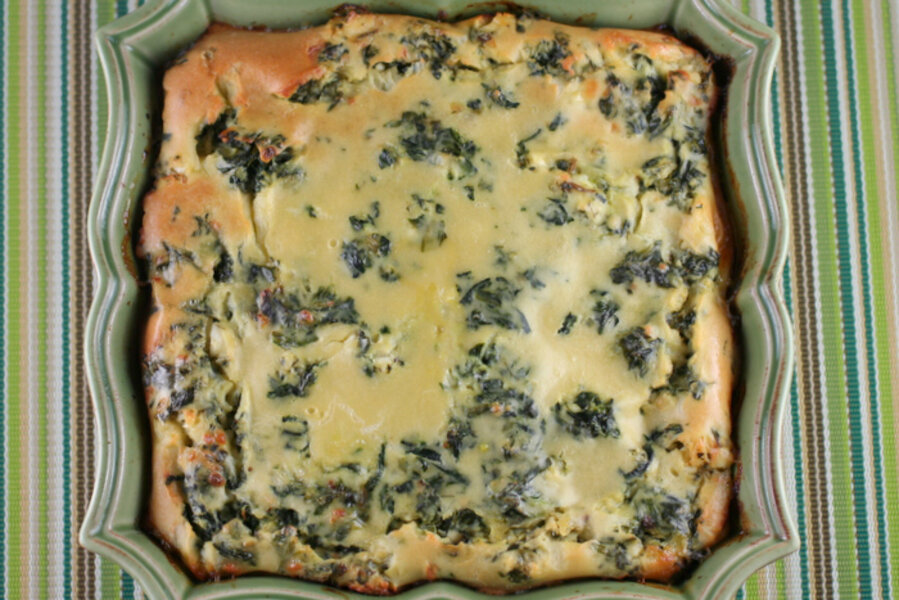Greek herbed spinach pie
Loading...
I do love dishes made with phyllo dough – spanakopita, tiropita – and the myriad of sticky sweet desserts made with it. But after a number of failed attempts, I have discovered that I simply do not have the patience to work with it. So I am attracted to recipes that mirror the tastes of my phyllo favorites without the work. My first success was Greek feta parcels, and now I have conquered spanakopita.
I found the basic formula for this recipe in a community cookbook and immediately thought I could give it a Greek twist. I’ve added feta cheese and generous amounts of dill and oregano.
The simple batter creates the balance of the delicate original pastry, but could not be easier to mix up. This can be served in big slabs for a meal or cut into smaller pieces for a side dish (try it with a chicken roasted with Greek seasoning and lemon); you can even slice it into small pieces to serve as an appetizer.
Greek herbed spinach pie
Serves 4
12 ounces frozen spinach, thawed
2 tablespoons olive oil
1 bunch (about 6) green onions, chopped
1 clove garlic, minced
1/4 cup chopped fresh parsley
1/4 cup chopped fresh dill
2 tablespoons chopped fresh oregano
1 teaspoon lemon zest
1 cup cottage cheese
1 cup crumbled feta cheese (crumble it from a block)
Salt and pepper to taste
4 eggs
1 cup all-purpose flour
1 cup water
1 tablespoon olive oil
1. Place the spinach in a clean tea towel and squeeze out as much moisture as possible. Separate the spinach with your fingers.
2. Heat the olive oil in a large skillet over medium-high heat. Add the green onions and cook until soft. Ad the garlic, parsley, dill, oregano, and lemon zest and cook until soft and fragrant. Add the spinach and stir to combine and separate the spinach. Remove from the heat and add the cottage cheese and feta and stir to combine. Season with salt and pepper to taste. Set aside to cool. When the filling is cool, beat 2 eggs in a small bowl, then stir into the filling.
3. Preheat the oven to 350 degrees F. Pour 1 tablespoon olive oil in the bottom of an 8- by 8-inch baking dish and swirl to cover the bottom of the pan. Blend 2 eggs, the water and flour, and 1 teaspoon salt together in a blender or with a whisk until completely smooth. Pour 1/2 of the batter evenly over the bottom of the oiled dish. Use clean, damp fingers to crumble and spread the spinach filling evenly over the top of the batter. Pour the remaining batter evenly over the top of the filling, covering fully, though a little filling poking up is fine.
4. Bake the pie for 40 to 45 minutes until puffed and golden and cooked through. Let the pie cool for about 5 minutes before slicing and serving.







